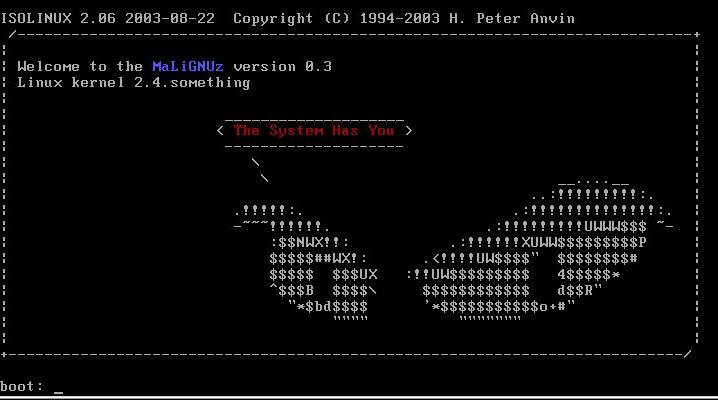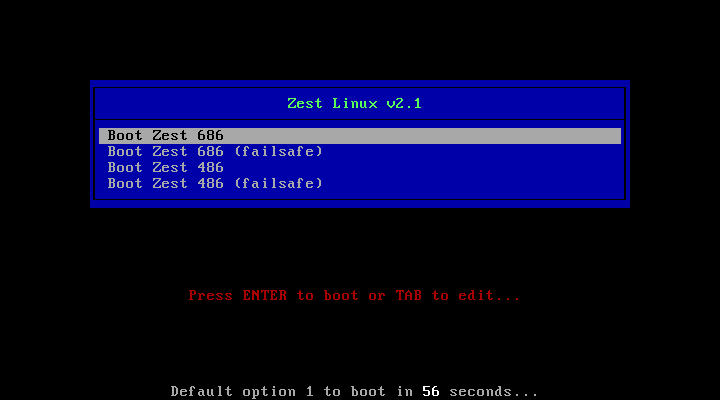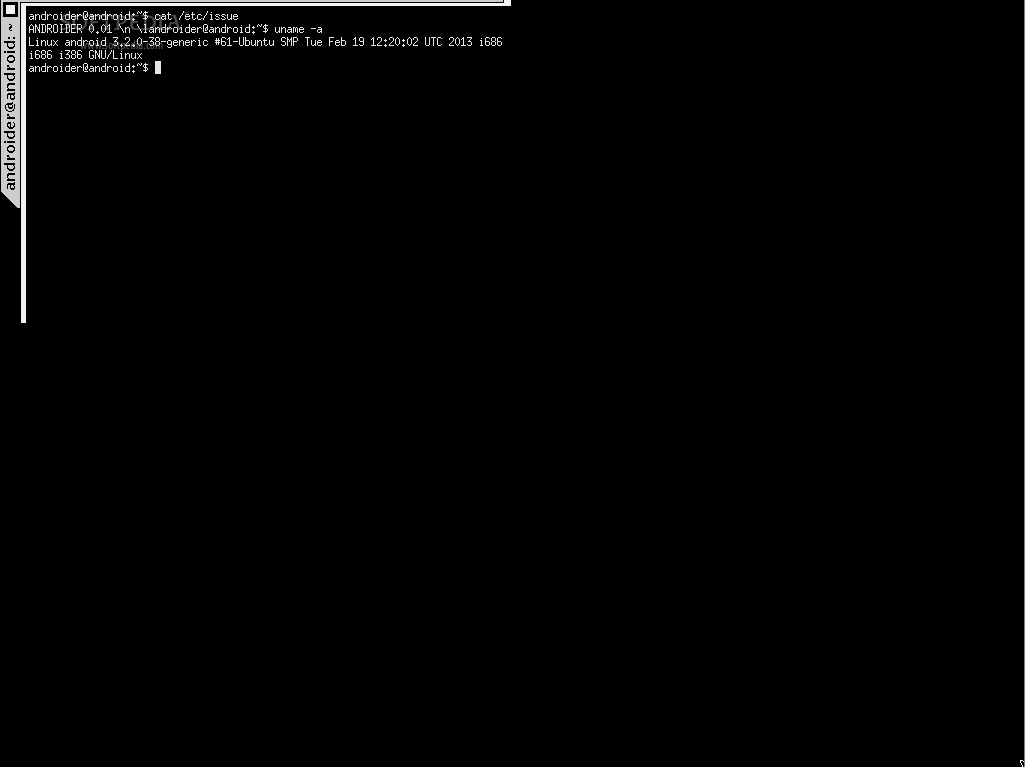Fedora KDE Live is an open source and free distribution of Linux, a special Live edition of the well known Fedora operating system, built around the KDE SC desktop environment. It is designed from the ground up to be used for previewing and installing the Fedora OS on high-end machines.
Availability, boot options, supported platforms
The distribution is available for download as two Live DVD ISO images, one for each of the supported hardware platforms (64-bit and 32-bit), which allow users to test the operating system without installing anything on their computers.
There are only two options on the boot prompt. While the first one will start the live environment with default options, the second one give users access to more advanced options, such as the ability to run a memory diagnostic test, boot an operating system that is installed on the first disk, or start the live session in safe graphics mode (only if your graphics card is not recognized by the default entry).
Pure KDE desktop environment with top-notch apps
As mentioned, the graphical session of this Fedora Live CD edition is powered by the well known KDE Plasma Workspace and Applications project, which has been untouched. It's comprised of a single taskbar located on the bottom edge of the screen, as well as a desktop widget.
The main menu can be accessed from the taskbar, allowing users to open applications. In addition, the taskbar can be used for interacting with running programs or the system tray area. Various widgets can be added with a single mouse click.
Default applications include the Konqueror web browser, Akregator feed reader, KGet download manager, KTorrent torrent downloader, Okular document viewer, Gwenview image viewer, Amarok audio player, K3b CD/DVD/BD burning software, Dragon Player video player, and KMail email client.
Bottom line
In conclusion, no matter if you want to try the KDE SC desktop environment on the Fedora platform or you just want to install the latest Fedora distribution with KDE on your mid-range or high-end computer, you should download the Fedora KDE Live CD.
What is new in this release:
- Plasma 5, the successor to KDE Plasma 4, is now the default workspace in the Fedora KDE spin. It has a new theme called Breeze, which has cleaner visuals and better readability, improves certain work-flows and provides overall more consistent and polished interface. Changes under the hood include switch to Qt 5 and KDE Frameworks 5 and migration to a fully hardware-accelerated graphics stack based on OpenGL(ES).
What is new in version 22 Beta:
- Plasma 5, the successor to KDE Plasma 4, is now the default workspace in the Fedora KDE spin. It has a new theme called Breeze, which has cleaner visuals and better readability, improves certain work-flows and provides overall more consistent and polished interface. Changes under the hood include switch to Qt 5 and KDE Frameworks 5 and migration to fully hardware-accelerated graphics stack based on OpenGL(ES).
What is new in version 20:
- KDE Plasma Workspaces 4.11 is a long term release of the popular, full featured desktop environment. Major changes have been made to user experience, personal information management, and performance aspects of the platform.
- User experience changes:
- Taskbar has been ported to QtQuick , providing more consistent and fluent behavior.
- Battery widget now supports keyboard brightness, and displays status for multiple batteries in peripherals, such as in mice and keyboards.
- Notification popups now have a configure button, allowing customization of the type of notification displayed.
- Kmix, the KDE sound mixer, performs better and more stably, in addition to adding media player controls to the widget.
- Improved performance of Kwin, the KDE window manager.
- Text editor Kate has new plugins for Python2, Python3, Javascript, JQuery, and XML.
- Improved user interface design in Kwallet.
- Kolourpaint, a simple painting application, now supports the WebP image format.
- PDF viewer Okular adds review tools and undo/redo support for annotations and forms.
- The JuK audio player and tagger adds support for playback and metadata editing of Ogg Opus format files.
- Personal Identity Management changes:
- Improved Kontact Suite, including better archiving, scheduled mail sending, simple message filtering interface, better notifications, and scam detection in Kmail.
- Performance Improvements:
- Numerous optimizations to Dolphin reduce memory usage by up to 30%.
- Better indexing and various improvements to Nemopuk make searches up to 6x faster, adds indexing for ODF, docx and other document formats, and improves backup and restoration functionality.
- KDE in Fedora 20 includes Plasma-nm, a new applet for network management. It supports user-friendly creation and editing of all connection types from NetworkManager, including bridges, bonds, and VPNs, with a modern and intuitive interface.
What is new in version 19:
- Make new things:
- Would you like to play? Whether you're a developer, maker, or just starting to learn about open source development, we have what you need to bring your ideas to reality. Here's a peek at some of our new tools:
- Developer's Assistant is a tool for new developers that helps you to get started on a code project by offering templates, samples, and toolchains for a variety of languages. And when you're finished, you can publish directly to GitHub!
- 3D modelling and printing are supported with OpenSCAD, Skeinforge, SFACT, Printrun, RepetierHost, and other tool options. Get printing without having to download binary blobs or run Python code from git.
- OpenShift Origin makes it easy for you to build your own Platform-as-a-Service (PaaS) infrastructure, allowing you to enable others to easily develop and deploy software.
- node.js is a popular Javascript-based platform for those building scalable network applications or real-time apps across distributed devices.
- Ruby 2.0.0, moves into Fedora but keeps source-level backwards compatibility with your Ruby 1.9.3 software. We're also giving you a custom Ruby loader to use to easily switch interpreters.
- MariaDB offers a truly open MySQL implementation and is now the default MySQL option in Fedora.
- Deploy, Monitor, and Manage:
- You don't have to work so hard when your machines are doing it for you. Regardless of how many you have, Fedora 19 helps you boot-manage your systems and gives you the tools you need for diagnosis, monitoring, and logging.
- systemd Resource Control is one of many systemd enhancements in this release. It lets you modify your service settings without a reboot by dynamically querying and modifying resource control parameters at runtime.
- Kerberos administrators no longer need their clients to sync their clocks or to have reverse DNS records carefully setup for services. Fedora 19 also includes Kerberos-enabled, LDAP replicated, two-factor authentication for FreeIPA.
- Checkpoint & Restore lets you checkpoint and restore a process. It is useful for issues like process failure or moving a process to another machine for maintenance or load balancing.
- OpenLMI' is a common infrastructure for the management of Linux systems that makes remote management of machines much simpler.
- Desktop Environments and Spins:
- GNOME 3.8:
- GNOME 3.8 brings new applications such as clock and improvements to the desktop including privacy and sharing settings, ordered search, frequent applications overview, and additionally provides the ability to enable GNOME Classic ("classic mode") for a user experience similar to GNOME 2 built out of a collection of GNOME Shell extensions. Refer to https://help.gnome.org/misc/release-notes/3.8/ for more details.
- KDE Plasma Workspaces 4.10:
- A modern, stable desktop environment, KDE Plasma Workspaces 4.10 includes new features for printing and screenlocking, better indexing of files, and improved accessibility features. Refer to http://www.kde.org/announcements/4.10/ for more details.
- MATE Desktop 1.6:
- The MATE 1.6 Desktop introduces a large number of improvements to this traditional, GNOME 2-like desktop interface. Refer to http://mate-desktop.org/2013/04/02/mate-1-6-released/ for more details.
- Spins;
- Spins are alternate versions of Fedora. In addition to various desktop environments for Fedora, spins are also available as tailored environments for various types of users via hand-picked application sets or customizations.
- Interest-specific Spins include the Design Suite Spin, the Robotics Spin, and the Security Spin, among others. Other available desktop environments, in addition to the GNOME 3.8 desktop which is shipped in the default version of Fedora 19, as well as those highlighted above, include Xfce, Sugar on a Stick, and LXDE.
What is new in version 18:
- For desktop users:
- Gnome 3.6 The newest version of the Gnome desktop provides an enhanced Messaging Tray, support for Microsoft Exchange and Skydrive, and many more new features. For more information visit the Gnome release notes. http://library.gnome.org/misc/release-notes/3.6
- KDE Plasma Workspaces 4.9 KDE Plasma Workspaces has been updated with many new features and improved stability and performance, including updates to the Dolphin File Manager, Konsole, and KWin Window manager.
- MATE Desktop The MATE desktop provides users with a classic GNOME 2.x style user interface. This desktop is perfect for users that have been running Gnome Classic, or other window managers like XFCE.
- Cinnamon Fedora users now have the option of using Cinnamon, an advanced desktop environment based on GNOME3. Cinnamon takes advantage of advanced features provided by the GNOME backend while providing users with a more traditional desktop experience.
- Improved storage management SSM (System Storage Manager) is an easy to use command-line interface tool that presents a unified view of storage management tools. Devices, storage pools, volumes, and snapshots can now be managed with one tool, with the same syntax for managing all of your storage. (It's great for systems administrators, too!)
- For developers:
- Fresh versions of programming languages Using Perl, Rails, or Python? All three of these languages are updated in Fedora 18 -- with Rails 3.2, Python 3.3, and Perl 5.16 now on deck.
- Clojure Clojure gets more love with the addition of tooling packages, including the Leinengen build tool, as well as Clojure libraries and frameworks, including Korma and Noir.
- DragonEgg optimizes GCC DragonEgg is a plugin for the GCC compilers to allow use of the LLVM optimization and code generation framework. DragonEgg provides software developers with more optimization and code generation options for use with the GCC compilers. DragonEgg also allows GCC to be used for cross-compilation to target architectures supported by LLVM without requiring any special cross-compilation compiler packages.
- For system administrators:
- Offline System Updates Systems can now be upgraded offline, allowing for a more stable upgrade of critical system components.
- Storage enhancements StorageManagement is a collection of tools and libraries for managing storage area networks (SAN) and network attached storage (NAS).
- Samba 4 This popular suite of tools has long provided file and print sharing services in heterogeneous operating system environments. The long-awaited Samba 4 introduces the first free and open source implementation of Active Directory protocols, and includes a new scripting interface, allowing Python programs to interface to Samba's internals.
- Riak A fault-tolerant key-value store, Riak provides easy operations, and predictable scaling as a NoSQL database.
- For clouds and virtualization:
- Eucalyptus Eucalyptus makes its first appearance in Fedora, with their 3.2 release included in F18. This platform for on-premise (private) Infrastructure as a Service clouds uses existing infrastructure to create scalable and secure AWS-compatible cloud resources for compute, network and storage.
- OpenStack With the Folsom release in Fedora 18, OpenStack continues to have the newest releases in Fedora. This open source cloud computing platform enables users to deploy their own cloud infrastructure, for private or public cloud deployments. Heat, an incubated OpenStack project, is also available in F18, providing an API that enables the orchestration of cloud applications using file or web based templates.
- oVirt Engine The management application for the oVirt virtualization platform, oVirt Engine, is updated to the newest version, 3.1. This release includes extensive new features, including support for live snapshots, cloning virtual machines from snapshots, quotas, and more.
- Suspend and resume support for virt guests Virtual machines get love with this feature, enabling the ability to suspend and resume guests, with the close of a laptop lid or menu option - or via the command line.
What is new in version 11:
- 20-second boot time - from the moment you turn on the computer to the login screen; shutdown times were also reduced;
- Default EXT4 install - the Fedora team took quite a bold step as the installation now defaults to this powerful new filesystem; experimental Btrfs support is also available;
- New artwork - beautifully designed from boot to the desktop: birds, wavy ribbons and dark blues are part of the new theme;
- KDE 4.2 - the latest and greatest K Desktop Environment with all its eye-candy included
- GNOME 2.26.1 - though there are no major changes, users will notice Brasero as the default CD/DVD burning tool, some minor interface tweaks, improved filesharing, better Microsoft Outlook support in Evolution and more;
- Xfce 4.6 - many new features make the lightweight desktop environment much more efficient and production-ready;
- Automatic Fonts & Mime Installer - enabling third-party programs automatically install required fonts, codecs or clipart;
- Fingerprint reading - devices that provide this feature are supported in Fedora 11 out of the box and configuring them can be easily done through the Authentication Configuration utility;
- ABRT - the Automatic Bug Reporting Tool is a very easy way to report bugs;
- Nouveau - the open source Nvidia driver is now enabled by default;
- Presto - updating the system will be much quicker as this yum plugin brings support for deltarpms, ensuring that only changed components are dowloaded, not the whole packages;
- Mozilla Firefox 3.5 Beta - a plethora of enhancements to the most popular open source browser makes this a great choice;
- Thunderbird 3 Beta - a great email client with improved performance and better IMAP support;
- Xserver 1.6 - bringing improved performance and stability;
- MiniGW - Windows cross-compiling has never been easier;
- TigerVNC - now the default VNC client;
- GCC 4.4, NetBeans 6.5, Python 2.6 and Git 1.6.2 are sure to increase developing productivity;
- OpenChange - out of the box Microsoft Exchange access;
- Improved Volume Control, now more user-friendly with per-application control and better handling of multiple speaker sets;
- DeviceKit system service, providing better ways to monitor disks through the Palimpsest utility;




Comments not found